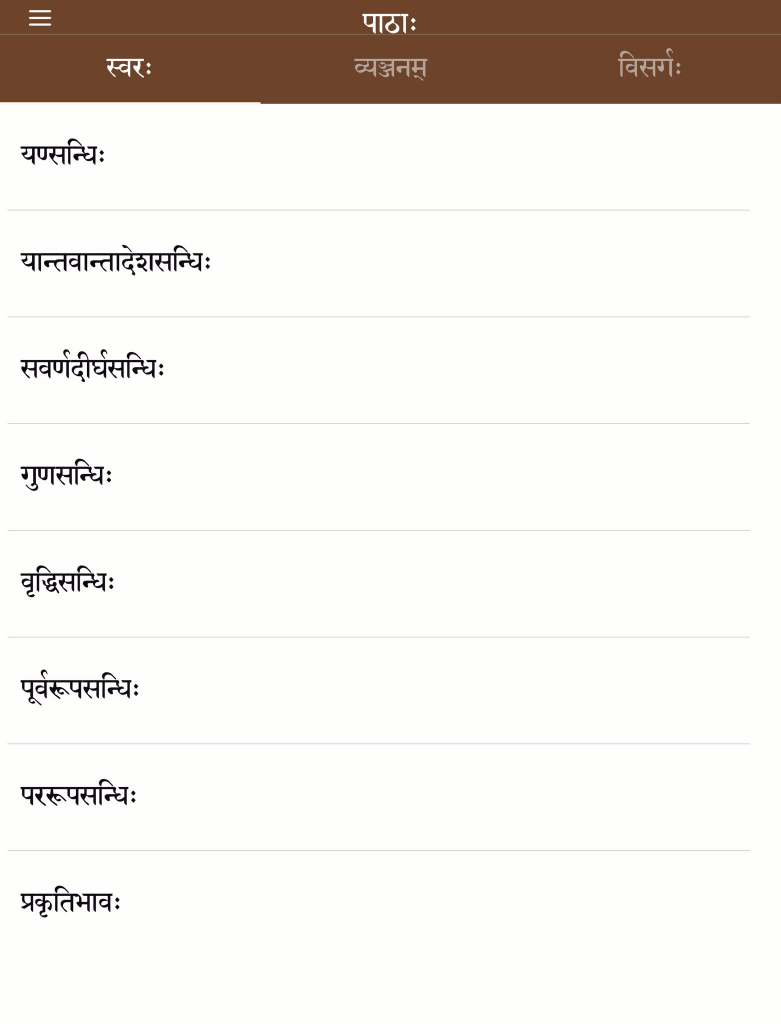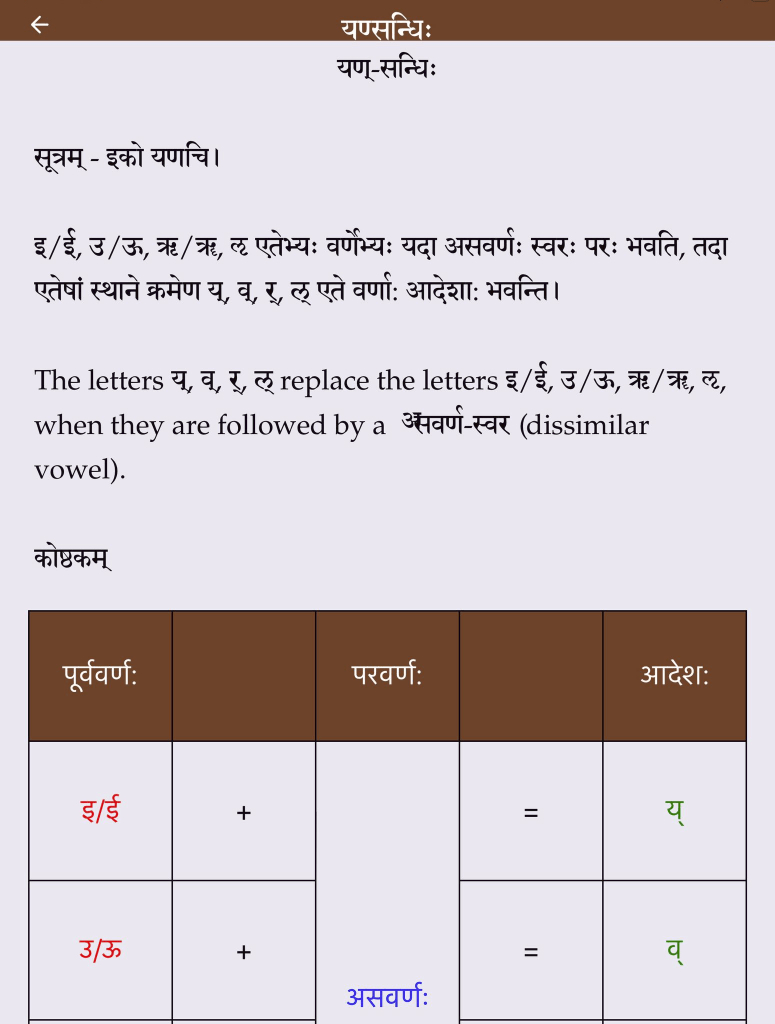How do I read these long, incomprehensible sentences in संस्कृतम् ?
Do you freeze when faced with a Samskritam sentence like this?
ओङ्कारपञ्जरशुकीमुपनिषदुद्यानकेलिकलकण्ठीम् ।
आगमविपिनमयूरीमार्यामन्तर्विभावये गौरीम् ॥
दयमानदीर्घनयनां देशिकरूपेणदर्शिताभ्युदयाम् ।
वामकुचनिहितवीणां वरदां सङ्गीतमातृकां वन्दे ॥
Do you tell yourself “this is too complex! I am never going to understand it” ?
If so, fret not!
By understanding the simple rules of Sandhi, you can easily start to enjoy the beauty of Samskrita Poetry as well as elegant prose!
Why Sandhi?
Samskritam prizes practicality, poetry and precision. So when writing Samskritam poetry or even complex sentences, we ‘merge’ individual words into continuous ‘sounds’. This causes ‘Sandhi’ to occur between individual words.
The resulting ‘merged’ longer phrase follows the sound laws human speech inevitably need to align as per the anatomical limitations of our speech organs!
Example:
गण + ईशः = गणेशः (not गणयीशः)
वाक् + ईशः = वागीशः (not वाकीशः)
Sandhi makes the sentence shorter, precise, easier to pronounce as well as euphonious
What is Sandhi?
संहितायां सत्यां वर्णविकारः।
संहिता is when letters (sounds) come extremely ‘close together’ when we speak
When संहिता occurs, a change in the letters or sounds (VarnavikaraH) also happen
Whenever such a change occurs, we call it a Sandhi
This short 2 minute video from Vyoma provides and overview of Sandhi
What are the different types of सन्धिः [Sandhi]?
3 types
स्वरसन्धिः
व्यञ्जनसन्धिः
विसर्गसन्धिः।
What are the different types of सन्धिः [Sandhi]?
3 types
स्वरसन्धिः, व्यञ्जनसन्धिः & विसर्गसन्धिः।
To learn more about सन्धिः, this app is wonderful
The android version: https://play.google.com/store/apps/det
The सन्धिः app has (a) Information about Sandhi (b) rules & examples for each Sandhi (c) exercises to practice Sandhi
(A) Basic introduction to Sandhi


(B) List of Sandhis, rules & examples for each rule



(C) Exercises for Sandhi – joining & splitting


Now that we understand the cause and need for Sandhi, how do we ‘unfreeze’ our brains when faced with
ओङ्कारपञ्जरशुकीमुपनिषदुद्यानकेलिकलकण्ठीम् ।
आगमविपिनमयूरीमार्यामन्तर्विभावये गौरीम् ॥
दयमानदीर्घनयनां देशिकरूपेणदर्शिताभ्युदयाम् ।
वामकुचनिहितवीणां वरदां सङ्गीतमातृकां वन्दे ॥
To unpack shlokas, as we have seen in the Anvaya process, the first step is to break sentences into component words. Then we can try to figure out the meaning

We will start off with breaking up the Sandhis + generating the simple meaning of words
ओङ्कार + पञ्जर + शुकीम् उपनिषद् + उद्यान + केलि-कलकण्ठीम्
आगम + विपिन + मयूरीम् आर्याम् + अन्तर्विभावये + गौरीम्।
दयमान + दीर्घ + नयनाम् देशिक-रूपेण-दर्शिता + अभ्युदयाम्
वाम + कुच + निहित + वीणाम् वरदाम् + सङ्गीत-मातृकाम् + वन्दे।
As we can see, once we unlock the Sandhis, it becomes easier to understand the meaning of individual words
ओङ्कार पञ्जर शुकीम् Omkar – aviary/nest /cage – parrot
उपनिषद् उद्यान केलि-कलकण्ठीम् Upanishad – garden – sporting/cooing – Koel
आगम विपिन मयूरीम् Veda / Agamas – woods/forest – peacock
आर्याम् अन्तर्विभावये गौरीम्। १ Aarya/(Parvati ?)/ meditate or do dhyana / Gauri
दयमान दीर्घ नयनाम् Compassionate/protecting – long – eyes
देशिक-रूपेण-दर्शिता अभ्युदयाम् Instructor/guide – in the form – showing – welfare/prosperity
वाम कुच निहित वीणाम् Left – bosom – placed – Veena
वरदाम् सङ्गीत-मातृकाम् वन्दे। २ Bestower of boons – music – mother – Vande
I contemplate (विभावये) upon Gowri in my heart (अन्तः) – Gowri, who is the she-parrot (शुकी) residing in the cage (पञ्जर) of ओङ्कार, the cuckoo (कलकण्ठी) sporting (केलि) in the garden (उद्यान) of Upanishad (उपनिषद्), and the peahen (मयूरी) in the forest of Veda (आगमविपिन)
So, as shown above, by learning the basics of Sandhi, we can easily unpack the long sentences and start to enjoy the brilliant poetry of Kalidasa!
To read through the entire shloka, please see this thread
